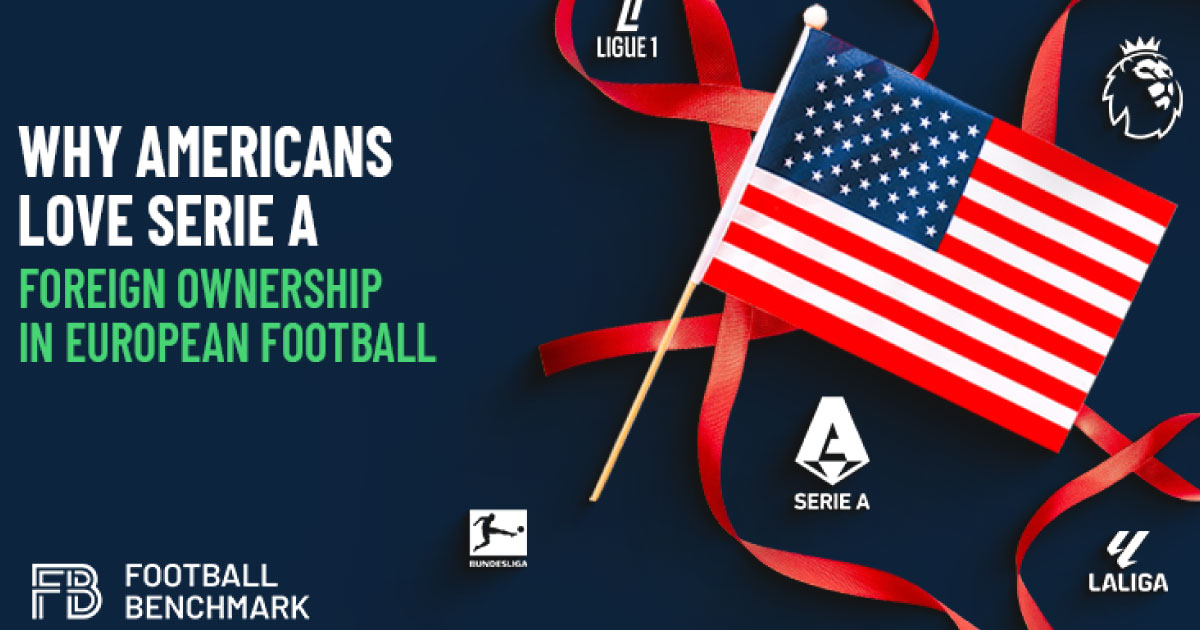
Why Americans love Serie A – Foreign ownership in European football
In recent years, European football has experienced a remarkable transformation in club ownership, driven by a range of motivations. For some, football clubs represent prestigious assets, while others are drawn by the opportunity to unlock untapped revenue potential within the sport.
Key insights:
- In Serie A, nine clubs are owned by North American investors, while the English Premier League surpasses that figure, with ten clubs under North American control.
- In recent years, Italy’s top league has become a favored destination for American investors, driven by two key factors: low acquisition costs and substantial growth potential.
- Across the European ‘Big Five’ leagues, 27 clubs are now owned by North American shareholders.
- In the 2024/25 Bundesliga, RB Leipzig remains the only club under foreign control.
As the football world becomes increasingly globalized, it is now common for club owners to come from outside the country of the teams they control. However, a closer look at ownership trends across the “Big Five” European leagues reveals stark differences in patterns of foreign ownership.
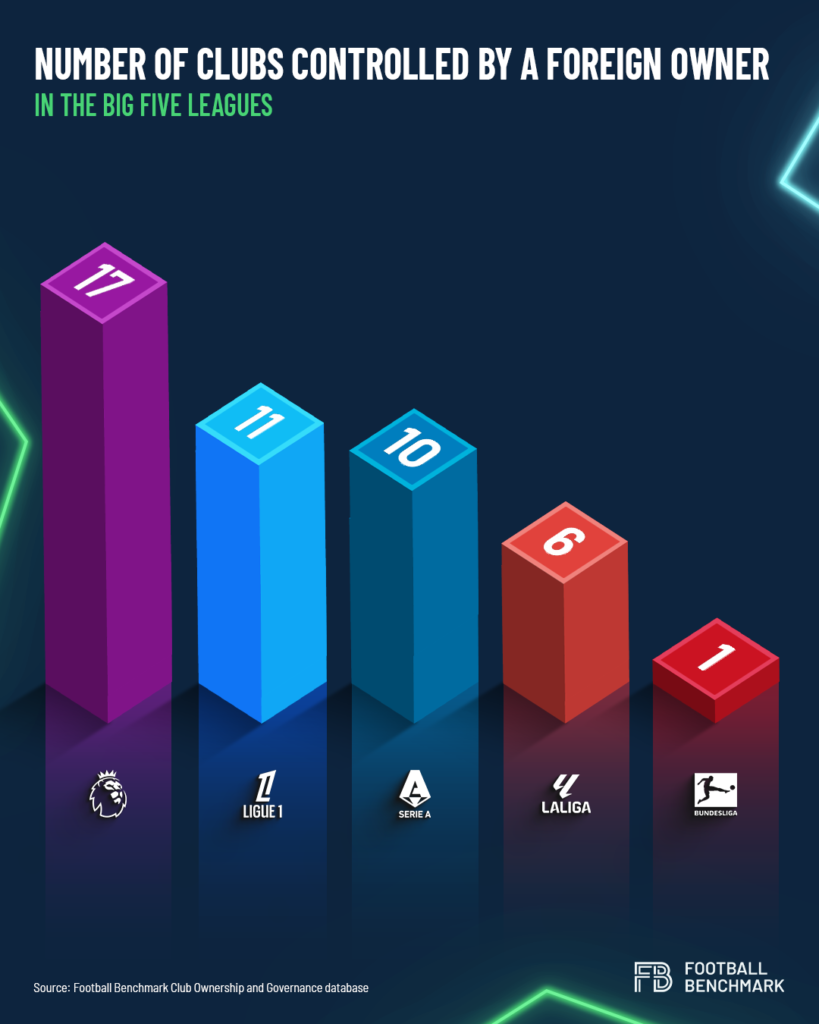
In the 2024/25 Bundesliga, for instance, RB Leipzig remains the only club under foreign control, with its majority stake held by Austria-based Red Bull GmbH. This stands in sharp contrast to the English Premier League, where just three clubs have UK-based majority owners, and the remaining 17 are controlled by foreign entities.
VISUAL – NUMBER OF CLUBS CONTROLLED BY FOREIGN OWNER
A deeper dive into the nationalities of these foreign owners across Europe’s major leagues highlights the growing influence of American investors. With over 20 clubs now controlled by U.S.-based owners, it is clear that American capital is playing a decisive role in shaping the future of European football.
VISUAL 2 – NUMBER OF CLUBS BY THE NATIONALITY OF FOREIGN CONTROLLING OWNERS
Gabelli’s interest in Monza exemplifies the broader trend of North American investors increasingly seeking footholds in European football. Currently, 27 clubs across major European leagues are owned by North American investors, drawn by the combination of relatively affordable entry prices and the promise of significant growth potential. Among the European football landscape, Italy stands out as a particularly attractive market, positioning itself at the center of this investment wave.
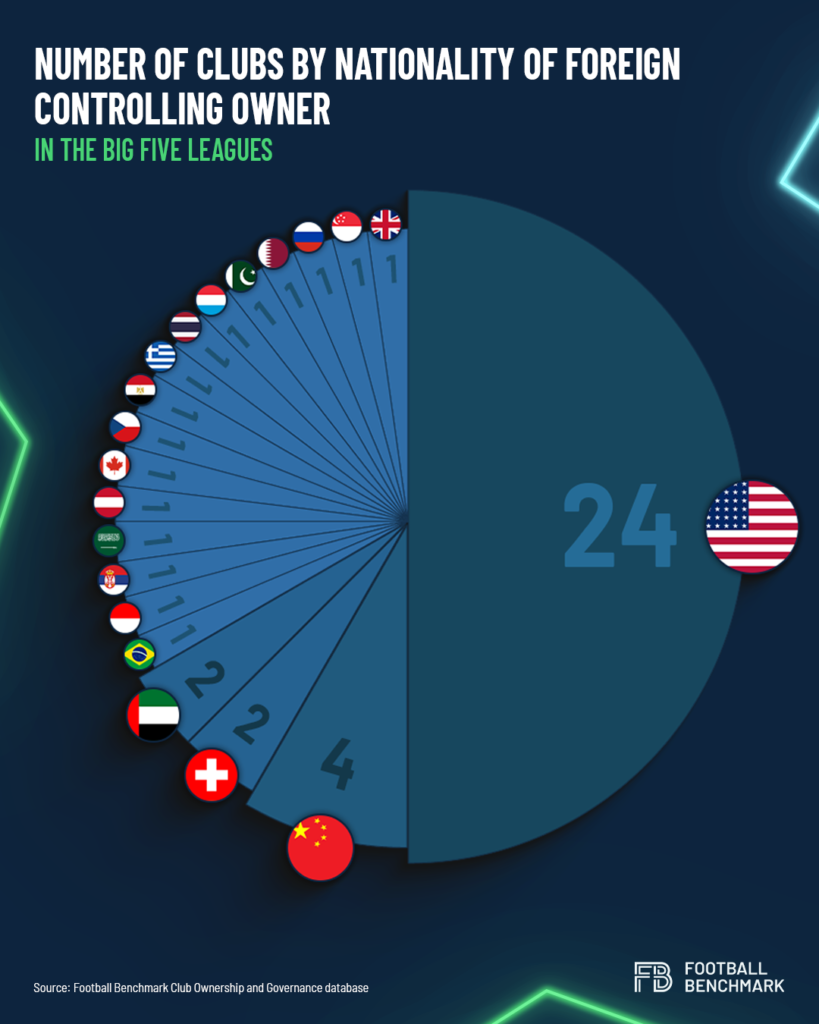
In Serie A, there are nine North American owners: eight Americans and one Canadian. In recent years, Italy’s top league has become a favored destination for these investors, driven by two key factors: low acquisition costs and substantial growth potential.
For some, the appeal goes beyond financial reasons, as a connection to local roots played a role in their decision-making—such as with owners like Commisso, Krause, Pagliuca, and Saputo. However, in other instances, the involvement of North American investors was more circumstantial. For example, Oaktree Capital took over Inter Milan when Zhang was unable to repay a loan, a scenario similar to Elliott Management’s earlier acquisition of AC Milan.
10 clubs in the Premier League, 9 in Serie A
European football presents an appealing business opportunity. Across the European ‘Big Five’ leagues, 27 clubs are now owned by North American shareholders. In Serie A alone, nine clubs—Atalanta, Bologna, Fiorentina, Genoa, Inter, Milan, Parma, Roma, and Venezia—are under North American control. With Genoa potentially changing hands due to 777 Partners’ default, another North American owner could soon enter the Italian football scene, as Italian-American investor Mario Gabelli is in talks for Monza.
VISUAL – CLUBS ITALY & ENGLAND
The English Premier League, known for its lucrative broadcasting deals and global appeal, hosts even more North American owners, with ten clubs: Arsenal, Aston Villa, Bournemouth, Chelsea, Crystal Palace, Fulham, Ipswich, Manchester United, Liverpool, and Everton, the latter awaiting formal approval of its acquisition by Friedkin. In France’s Ligue 1, six clubs are owned by North Americans (Le Havre, Lyon, Marseille, St. Etienne, Strasbourg, and Toulouse), while in Spain’s La Liga, two clubs—Leganés and Mallorca—have North American backing.
VISUAL – CLUBS LIGUE 1 and LALIGA
The Bundesliga, due to its 50%+1 ownership rule, remains largely resistant to foreign takeovers, with RB Leipzig being the sole exception under the control of Austria’s Red Bull.
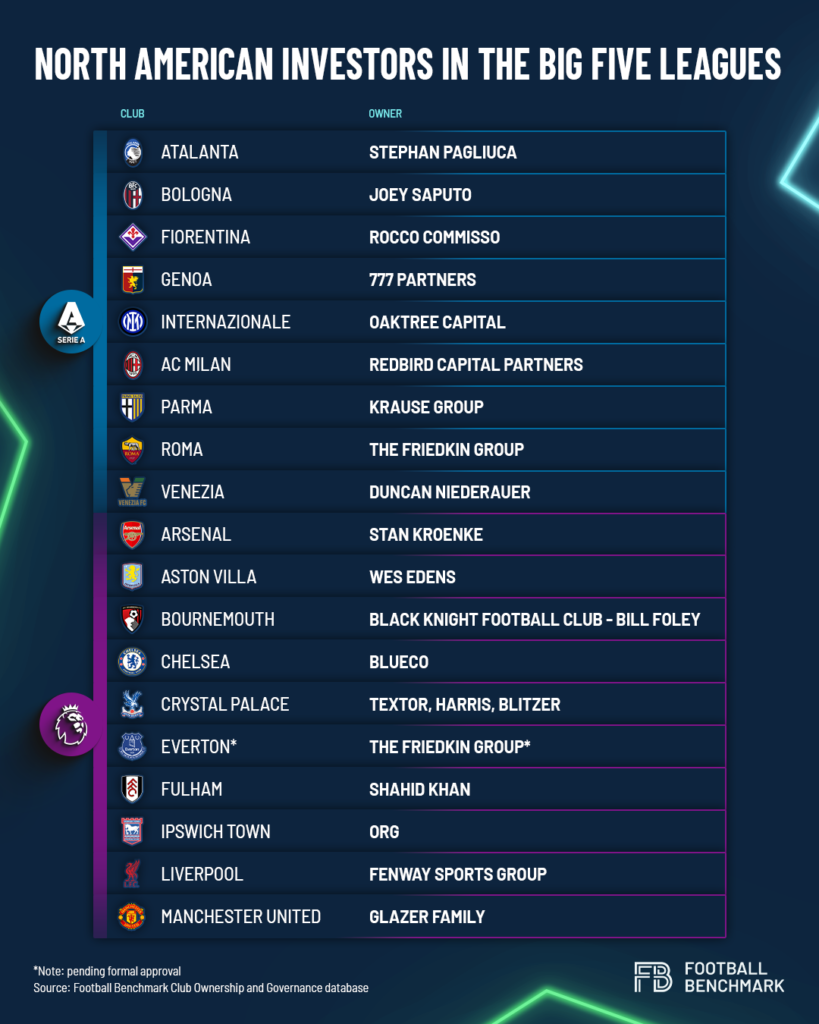
Low Prices Compared to U.S. Franchises
When American investment funds and entrepreneurs found themselves flush with liquidity, many turned their sights toward football, recognizing a unique opportunity. They had two significant advantages: substantial purchasing power and deep connections within the media and entertainment industries. European football, to these investors, often resembles American professional leagues—a commercial spectacle ripe for exploitation through evolving marketing strategies and the global reach of the sport.
It’s no surprise, then, that nearly every American who has entered Italian football envisions transforming clubs into media companies, with a focus on expanding infrastructure. However, progress on stadium development has been disappointing. Despite ambitious plans, American owners have repeatedly run into bureaucratic and political obstacles, slowing their efforts. There’s a risk that continued frustrations may eventually cause some to rethink their investments, possibly leading to a retreat.
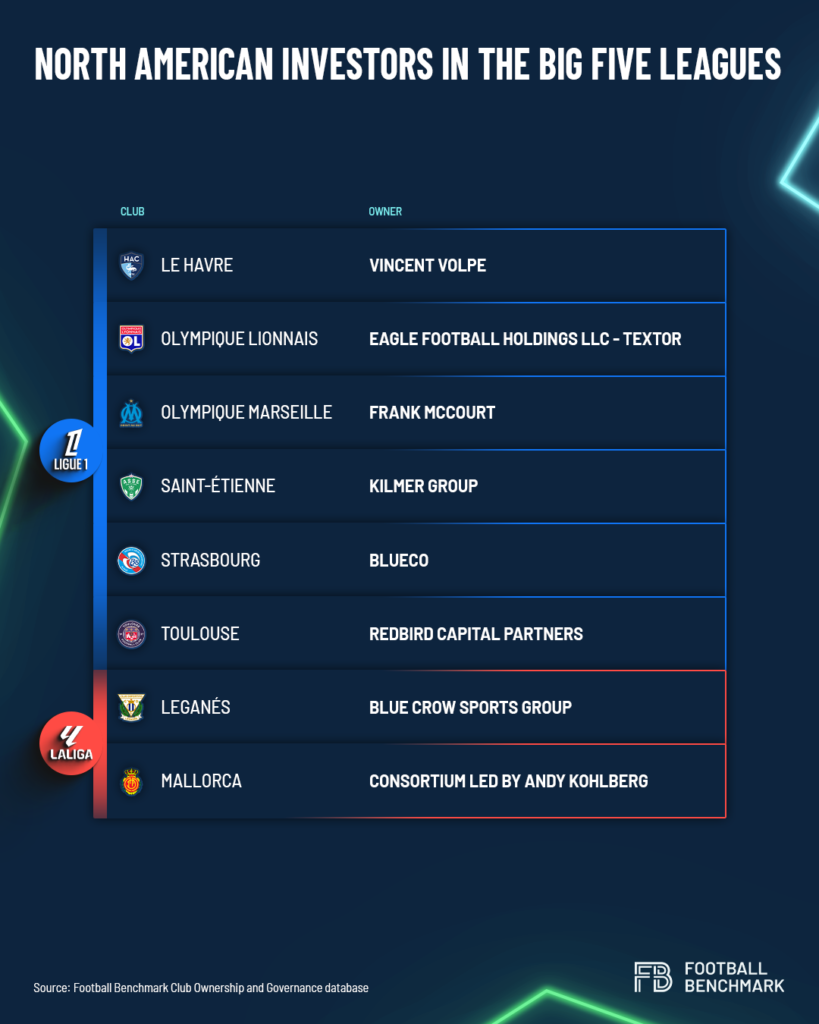
For now, though, interest remains high. With NFL, NBA, and MLB franchises achieving unprecedented valuations – like the Dallas Cowboys surpassing $10 billion, according to Forbes – football remains comparatively affordable. Chelsea FC and AC Milan, the two biggest US-led acquisitions in 2022, were sold at €2.9 billion and €1.2 billion, respectively. These figures, while significant, pale in comparison to the valuations seen in major American sports leagues, keeping European football an enticing option for North American investors.



